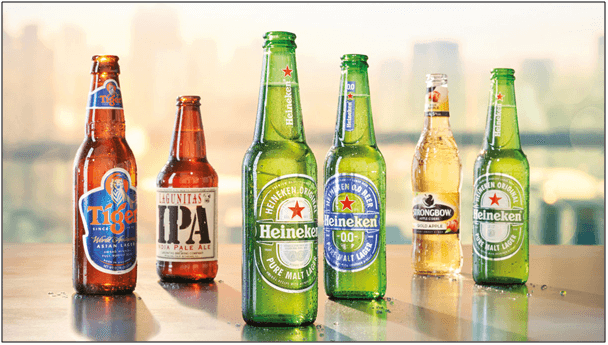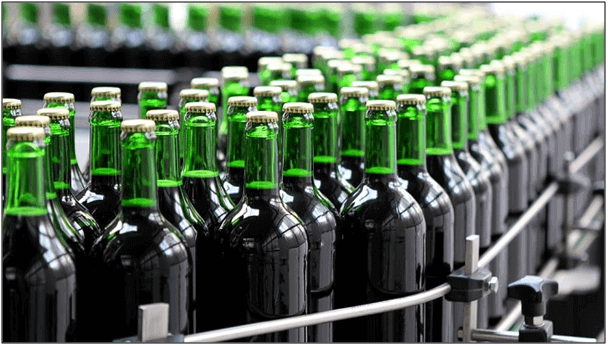The alcoholic beverage industry is a challenging business. Consumers’ attitude determines how the business is done in the industry. The global alcoholic beverages market is forecast to grow to $1,684 billion by 2025. That implies that a billion litres of drinks will be delivered to consumers all over the world. Supply chain and distribution are the key factors to remain successful in the market. By improving these areas increase the company’s profits.
Companies need to be familiar with the market trends and preferences. The alcoholic beverage industry is constantly evolving. Companies must come up with solutions to resolve these challenges.

Table of Contents
Regulatory Challenges of Alcoholic Beverages
The production and distribution of alcoholic beverages are monitored by different regulations. Companies need to comply with state and local laws to sell their products. The bigger the operation is, the greater the risk of non-compliance for its customers, partners, reputation, and financial health. Production, storage, and transportation including ingredients, production processes, workplace safety, health, and environmental impact must all observe regulations.
Growing Numbers of Stock-Keeping Unit (SKU)
As the number of products the alcohol manufacturer produced increased, the number of unique SKUs allocated to each product increased as well. With the increased numbers of SKUs, managing inventory, order taking, order processing, delivery, and forecasting the growing number of product lines are becoming more and more complex and challenging. Companies will need to consider a catalogue-centric solution that will support the inventory and billing, as well as providing a great sales route planner tool.
Challenges of Developing Online Presence
Most of the industries are moving online to have a wider range of consumers. The alcoholic beverage industry is still in the transition period of moving online. Some alcohol beverage brands have created an online presence successfully, while some other brands found that it helps to create a strategic partnership. Your online presence must show your brand personality instantly when a consumer browses your product. Make use of online marketing such as social media to provide consumers with more details of the products they are browsing.
Increasing Demand for Ethical Brand
Today, customers are becoming more conscientious when it comes to buying alcoholic beverages that are marketed as gender neutral.Alcoholic beverages are no longer a male-dominated market. If companies wish to remain competitive, they must introduce more campaigns to target both genders.
Packaging Hazards of Alcoholic Beverages
Alcoholic beverages can interact with the containers that are used to contain the product. Chemicals in packaging can be inappropriately released into the beverages through shocks, vibration, temperature variation, or simply through contact with fluids. Packaging made of glass or stainless steel may require special arrangements for recycling. Post distribution and packaging can become a type of waste if not handled properly.

Volume of Alcoholic Beverages
People have become more health-conscious nowadays. Consumers are encouraged to consume alcoholic beverages in moderation. The alcoholic beverage industry needs to consider how it packages and presents its product in a mindful way for consumers. Companies need to take into consideration introducing smaller packaging or serving portions. This will balance the product desire for both new and more mature consumers.
Marking Challenges of Alcoholic Beverages
The logo of the alcoholic beverage that resonates with a consumer will ensure their sales will be good. Choose appropriate colours to represent your brand and product. The fonts of the product information must be easily read by consumers. Good packaging is important and crucial in consumers’ decision-making. The product packaging must protect the alcoholic beverage. It must ensure the product does not leak or contaminates the content. The packaging also must be convenient for consumers. It must be easily opened and carried. The alcohol label must include information such as shelf-life, nutritional content, net weight, name of the manufacturer, allergens, alcohol by volume percentage, etc.
The full content is only visible to SIPMM members
Already a member? Please Login to continue reading.
References
Brindiamo Group. (2021). “The Importance of Alcoholic Beverage Packaging”. Retrieved from https://www.brindiamogroup.com/news-posts/2018/11/19/the-importance-of-alcoholic-beverage-packaging, accessed 17/03/2021.
Lawrence Ho Mun Yong, DLSM. (2020). “Packaging Techniques for Outbound Logistics”. Retrieved from SIPMM : https://publication.sipmm.edu.sg/packaging-techniques-outbound-logistics/, accessed 17/03/2021.
Rob O’Byrne. (2019). “Bottles, Barrels and the Business of Beverage Distribution”. Retrieved from https://www.logisticsbureau.com/bottles-barrels-and-the-business-of-beverage-distribution/, accessed 17/03/2021.
Ross A. Wirth, Ph. D. (2010). “Implementation Problems in small businesses”. Retrieved from https://www.entarga.com/stratplan/smproblems.htm, accessed 17/03/2021.
Stacey Woods. (2017). “Top 7 challenges beer distributors are facing today”. Retrieved from https://www.pepperi.com/top-challenges-beer-wine-distributors/, accessed 17/03/2021.
Tan Sze Hwee Jacqueline, DPSM. (2020). “Overcoming Key Challenges in Supplier Development”. Retrieved from SIPMM: https://publication.sipmm.edu.sg/overcoming-key-challenges-supplier-development/, accessed 17/03/2021.
Team Linchpin. (2021). “Alcohol Industry Challenges & Opportunities In 2021”. Retrieved from https://linchpinseo.com/common-challenges-facing-the-alcohol-industry/#1-creating-an-effective-online-presence, accessed 17/03/2021.
Yogaraj Sandrakumar, DLSM. (2020). “Food Packaging for Logistic Distribution”. Retrieved from SIPMM: https://publication.sipmm.edu.sg/food-packaging-logistic-distribution/, accessed 17/03/2021.


